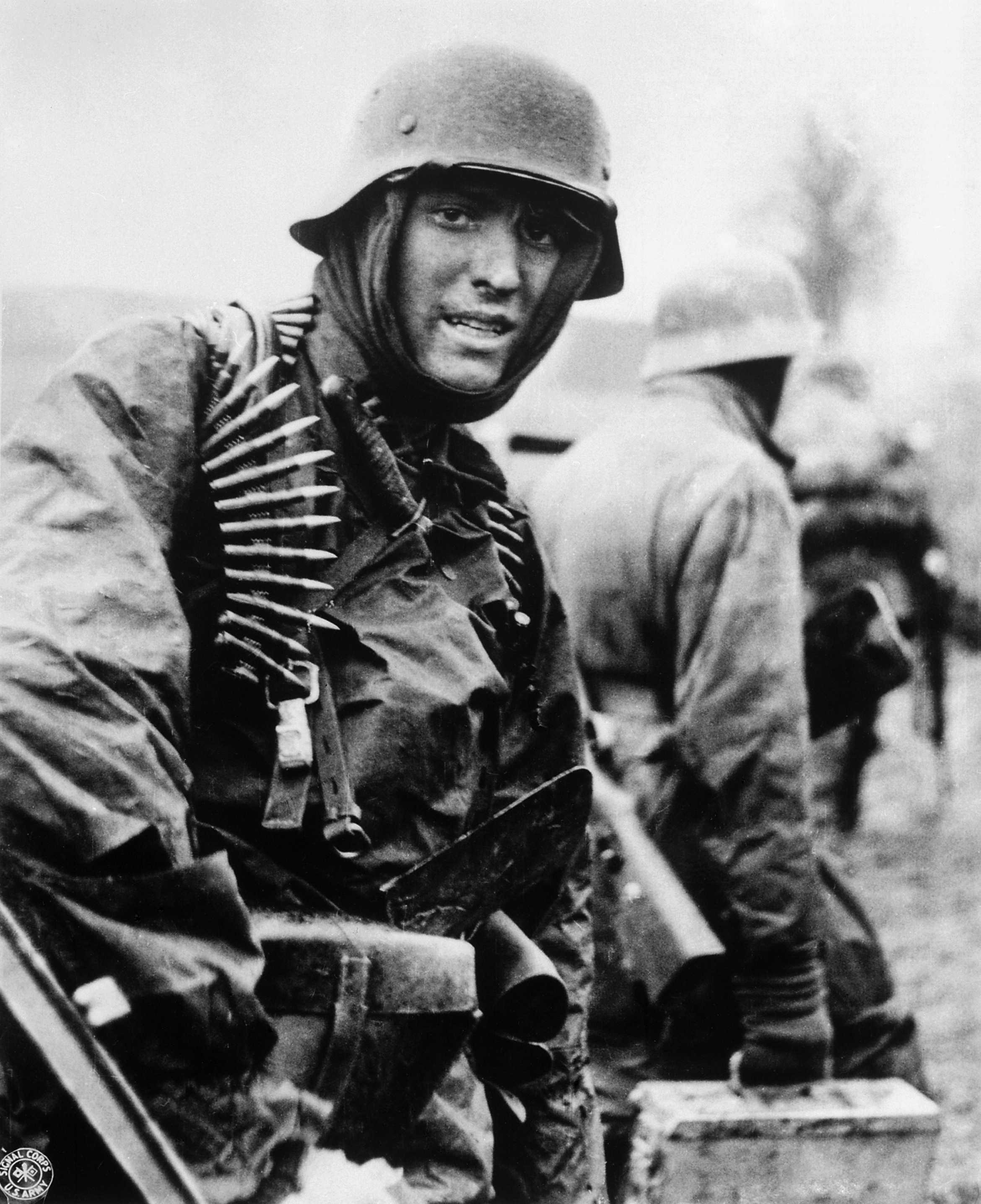December each year focuses the mind on the winter Ardennes Campaign of 1944, one of Germany’s last major offensives against the Western Allies after D-Day. It began on 16 December in appalling weather and took the Allies by complete surprise. However, after some initial successes, the attack had stalled by Christmas and petered out by mid-January, costing each side between 80-100,000 casualties.
Wacht am Rhein
In outline, Hitler’s concept was for two tank armies to assault the 89-mile-long Ardennes front, thinly held by 80,000 men of General Troy Middleton’s US VIII Corps. In the first wave, Middleton’s GIs would be attacked by more than 200,000 Germans with 600 tanks and other tracked vehicles.
In the north, General Josef Dietrich’s Sixth Panzer Army, composed mainly of SS units, was ordered to slice through US lines, swarm over the Elsenborn Ridge, cross the mighty Meuse river at Liège and head for Antwerp. On their left flank, Baron Hasso von Manteuffel’s Fifth Panzer Army would cross the hills and river network to their front between Saint Vith and Bastogne, aim for Namur on the Meuse, and beyond, for Brussels.
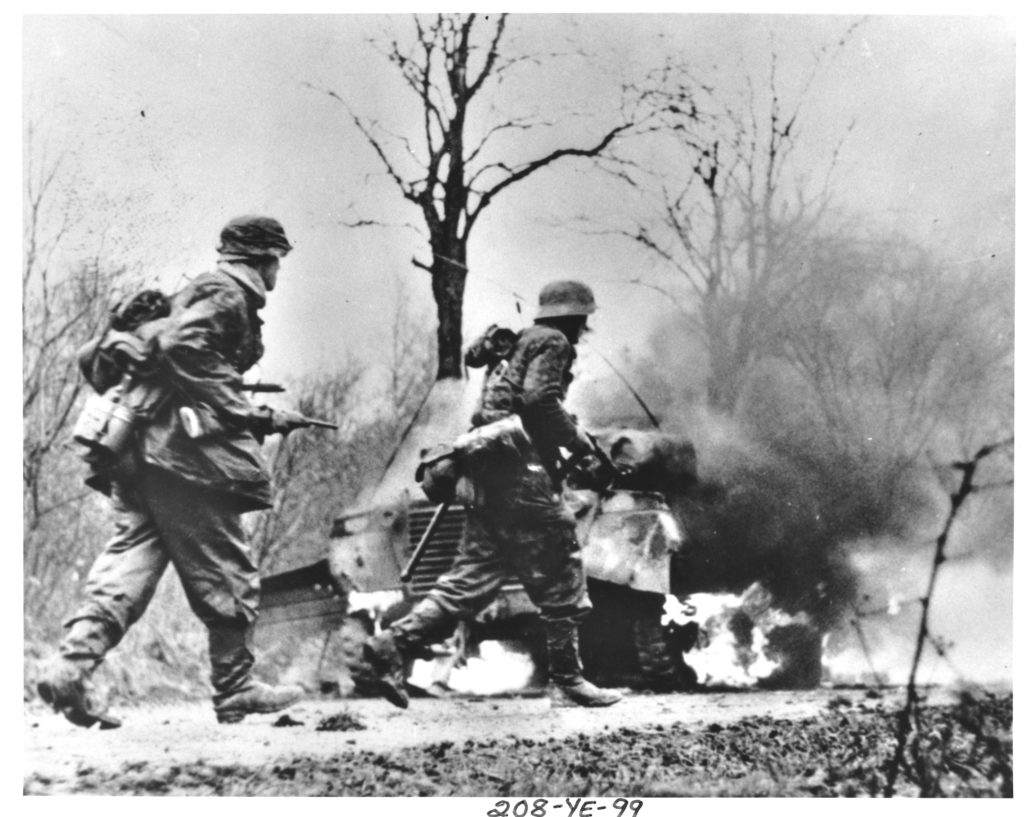
The initial plan was for the northern flank to be protected by the German 15th Army, but in the event they contributed nothing to the operation, being exhausted by the recent Market Garden and Hürtgen Forest campaigns. However, guarding the southern flank was Erich Brandenberger’s Seventh Army, heavy in infantry but with no armour at all.
Their task was also to effect a river crossing, advance to the vicinity of Luxembourg City and block any counter attacks, which were widely expected from the general the Germans most feared – George Patton – and his US Third Army.
The GIs spaced along the Ardennes comprised a mixture of tested veteran infantrymen in the Second, Fourth and 28th Divisions, and ‘greenhorns’ such as the recently arrived 99th and 106th Divisions. Yet even the battle-hardened Fourth and 28th were full of replacement men, having lost huge numbers in the hell of the Hürtgen Forest campaign, which had just ended.
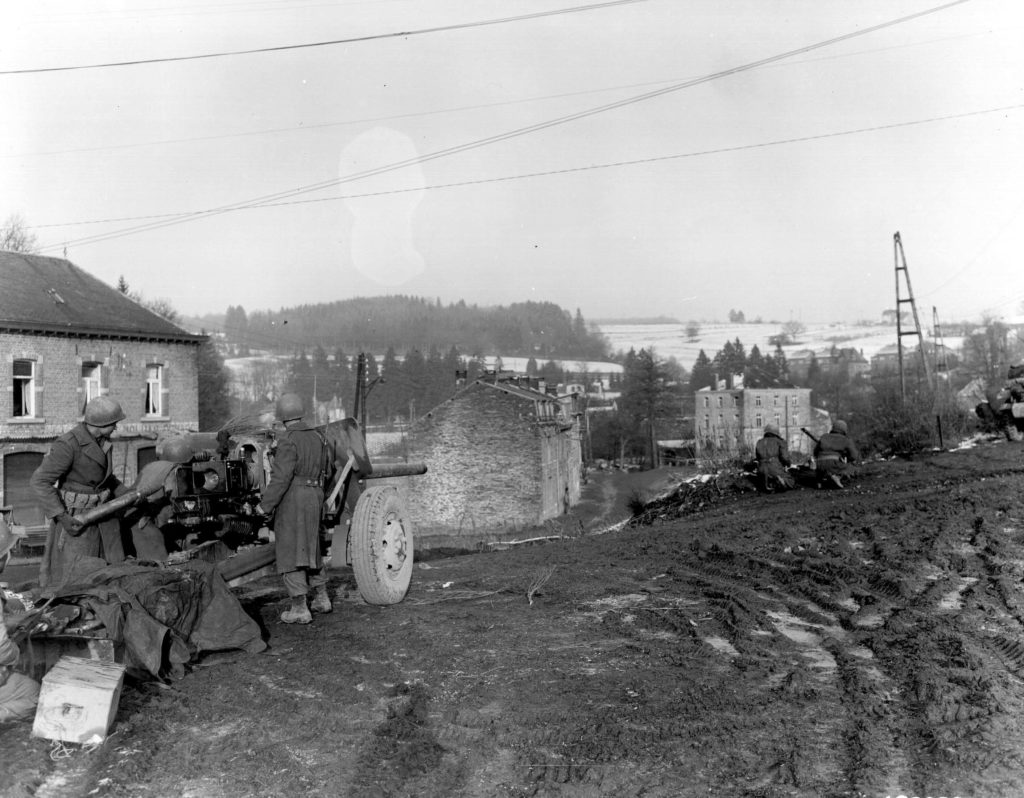
Nevertheless, even the newest American recruit had received months of useful training before deployment, and was supported by the industrial might of the United States.
Initially codenamed Wacht am Rhein (‘Watch on the Rhine’), the attack was planned personally by the Führer. Its genesis is usually ascribed to a conference in the Wolf’s Lair (his East Prussian headquarters) on 16 September, when Hitler suddenly demanded a massive panzer counter attack with air support to retake Antwerp, which had just fallen.
The thrust was to commence on 1 November, when the usual autumnal weather of low cloud and fog would ground the Allied air forces.
Hitler’s choice of Antwerp was strategic – he knew the port would drastically rebalance the Allies’ logistics. Until that moment, his British, American and Canadian opponents were having to drag their supplies – at a huge cost in fuel – the 300 miles from the Normandy beaches to the front, as no other working harbours had been captured.
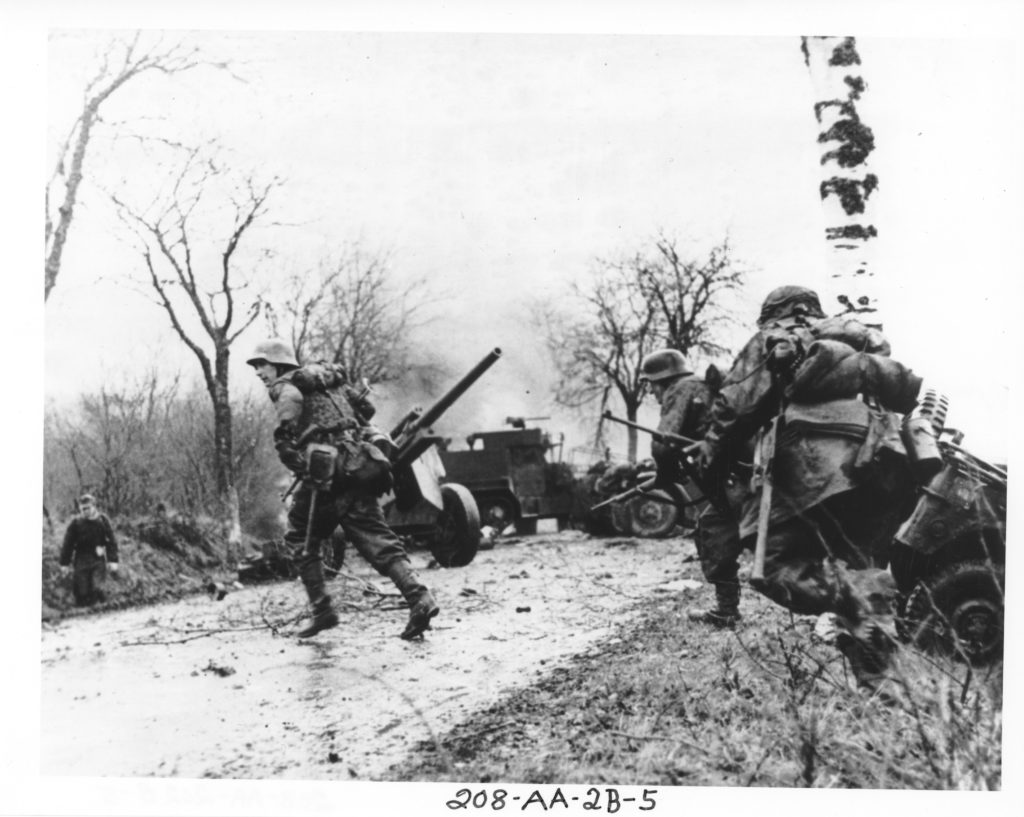
The use of Antwerp (admittedly the German-occupied banks of the Scheldt estuary leading to Antwerp had yet to be subdued) could shorten this journey by two-thirds and enable the Allies to deploy their massive logistics resources to maximum effect.
In fact, as early as 31 July, we now know that Hitler ordered Germany’s western frontier defences, known as the Siegfried Line, to be re-strengthened and rearmed. Strikingly, he also instructed General Jodl at OKW (Oberkommando der Wehrmacht, or Supreme Command of the Armed Forces) to study the documents relating to ‘dem Vorbild des Jahres 1940’ – the ‘role model of 1940’ – meaning the successful German attack through the Ardennes into France.
Thus, it seems that Hitler anticipated the defeat in Normandy, followed by the Allied advance to the Siegfried Line. The OKW historian, Major Percy Schramm, a pre-war professor of history, dug out the 1940 files and noted how Hitler’s favourite general, Erwin Rommel, had sliced through the Belgian-French defences in the heavily wooded Ardennes with his Seventh Panzer Division in just three days.
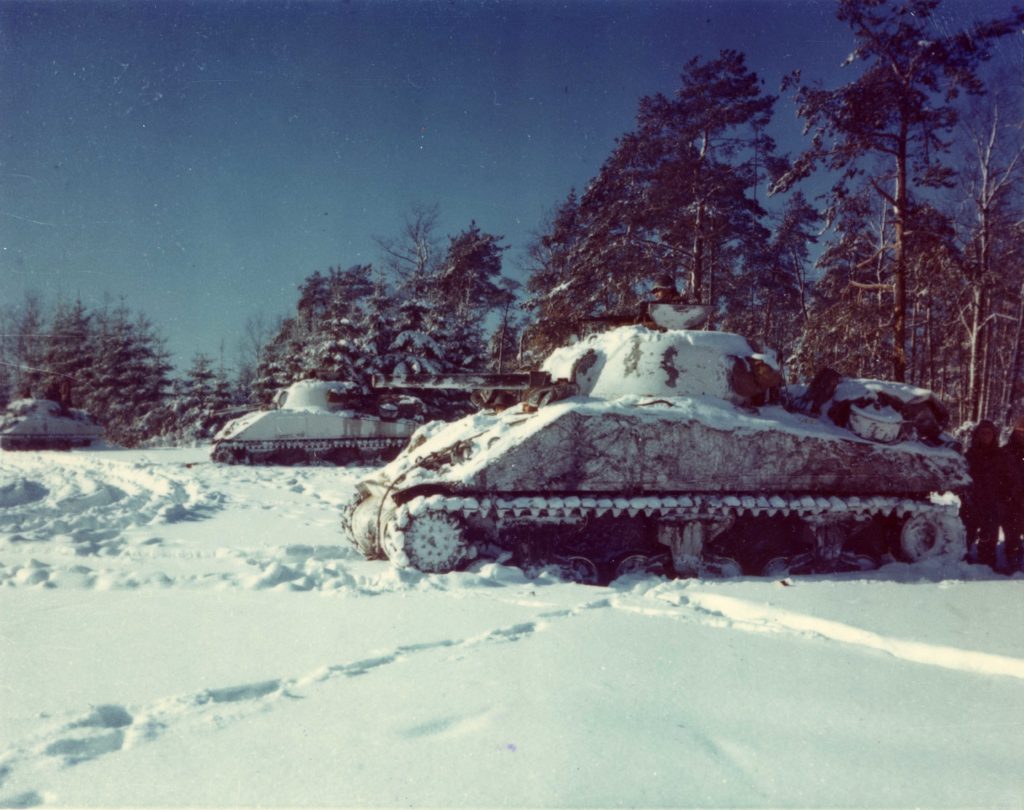
So the conference on 16 September, which is often reported as Hitler having a sudden brainwave for the counter attack, was in fact the result of several weeks of planning and research by OKW staff.
Analysis of those present in the Wolf’s Lair on 16 September shows the usual assembly of military officers, but after a situation report, Hitler went into a private session with a chosen few, where he announced the planned counter stroke.
At this second meeting were representatives of the SS, Luftwaffe and diplomatic corps – a guest list that seems to have been carefully chosen – and not the usual collection of bystanders at a military briefing. We can now conclude that it was essentially an attempt by Hitler to reassert his control over the Third Reich.
Colonel Count Claus von Stauffenberg’s bomb plot of 20 July had shaken the Führer so much that he had withdrawn into himself, accompanied by a breakdown in his health.
He also assumed the failed assassination would encourage other groups at the heart of the Reich to stage another coup, but if he could pull off a further spectacular victory, this might be averted. His best victory was, of course, the conquest of France in May-June 1940 – heralded by the Ardennes attack.
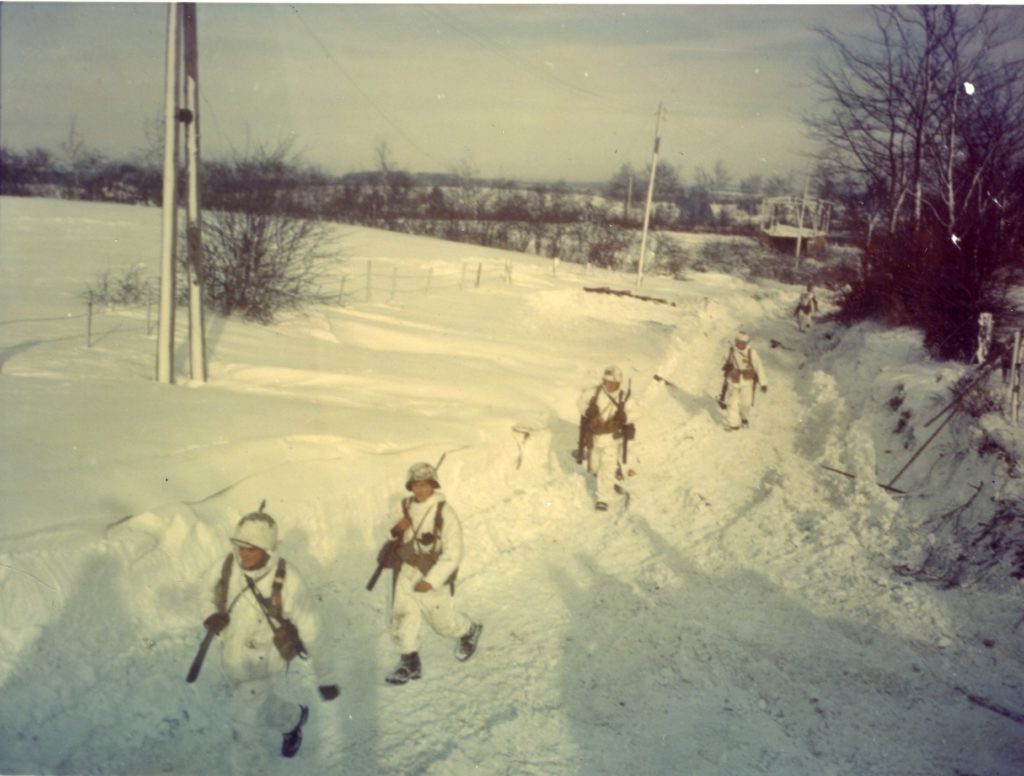
After its completion, both sides should have learned more from the failed airborne assault than they did. The ability of scantily trained Luftwaffe and army battlegroups, hastily summoned to the Market Garden area to prevail alongside the Waffen-SS, should have warned the Allies what they could expect in the future, for it was precisely this mix of veteran and green multi-service troops that would emerge out of the Ardennes on 16 December.
For the Germans, if Horrocks’ XXX Corps was unable to manage the 60 miles to Arnhem in good weather with air superiority, what hope had the Ardennes venture of reaching Antwerp, which was double the distance, in poor weather and without air cover?
The attack begins
There remains a debate as to how Herbstnebel (‘Autumn Mist’ – the final code name for the operation) came as a complete surprise to the Allies. It was partly the fault of the ‘Happy Hypothesis’, emanating from Eisenhower’s SHAEF headquarters that the German army was finished.
Reflecting this spirit of optimism, units were encouraged to disregard tactical intelligence reports gained from aerial reconnaissance, signal intercepts, and prisoner and civilian interrogations that suggested the opposite. Strategic intelligence from Bletchley Park also dried up.
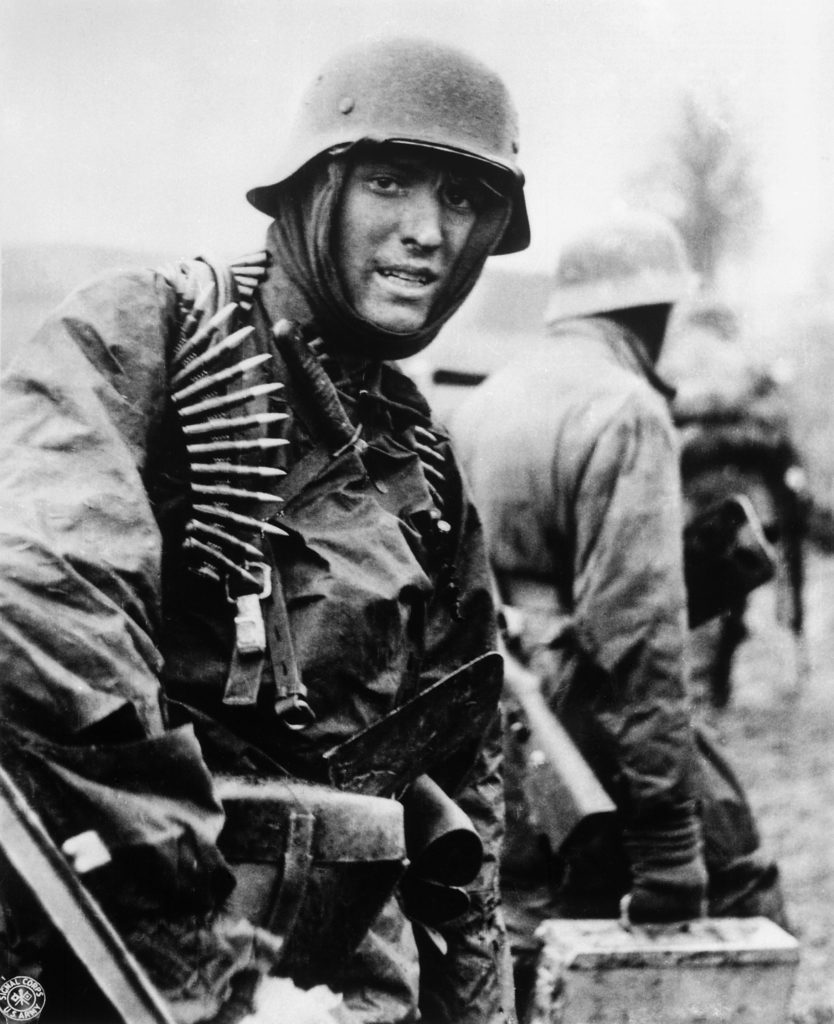
As the Reich shrank, the need to send coded messages by the Enigma enciphering machine (which Bletchley could decipher) diminished. Instead, officer couriers hand delivered written orders.
The warning signs were there, but they were buried among Enigma signals sent by Deutsche Reichsbahn (German railways) detailing troop and equipment moves towards the Ardennes, and Luftwaffe messages detailing the concentration of aircraft for a future mission – misinterpreted as a deployment of fighters against the Allied bombing fleets.
After several postponements, the blow eventually fell on 16 December, the date being decided by the onset of fog and snow in the battle area. This, in turn, was triggered by weather reports over the previous week from U-boats in the North Atlantic: Bletchley Park intercepted their signals, but attached no immediate significance to them.
At precisely 5.30am, the misty gloom of the Ardennes was ripped apart by a deafening roar as woods were shredded, the earth trembled and ground exploded in showers of stone and red-hot metal.
GIs hunkered down in their trenches, bunkers and commandeered houses, wondering what was happening, while every calibre of shell the Third Reich possessed was hurled at them.
Headquarters, artillery positions and communications links were targeted, and soon, out of the darkness swarmed hundreds of Volksgrenadiers, who swiftly overwhelmed the forward positions.
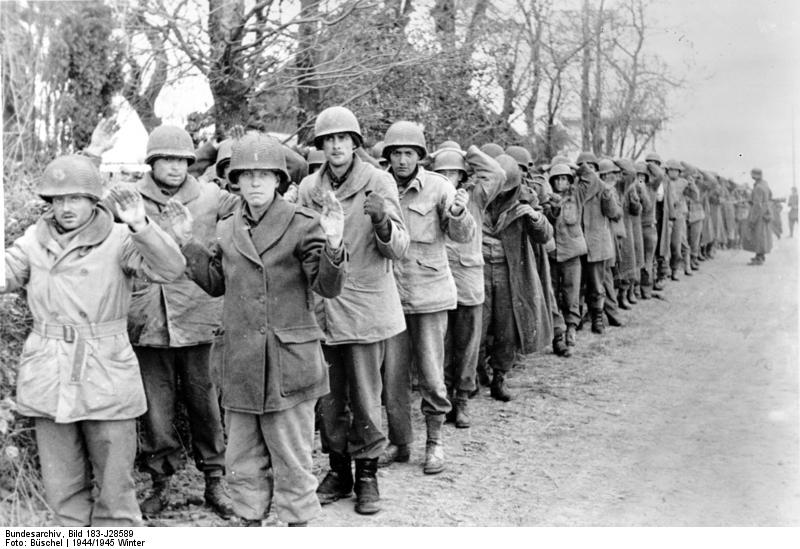
Hitler had ordered that both the tank armies – Dietrich’s Sixth and Manteuffel’s Fifth – be preceded in their assaults by the Volksgrenadier divisions.
This was in contrast to the advance of May 1940 over the same terrain, which had been spearheaded by armour, with the infantry plodding behind and mopping up. Back then, Rommel’s Seventh Panzer Division had made it to the river Meuse in three days.
The Führer’s ambitious timetable called on his armies to achieve the same in two days – but in mid-winter amid appalling weather.
The odds were against them from the start, as the Volksgrenadiers relied on horses (they took 50,000 to the Bulge) and their artillery was mostly of World War I vintage, or captured French or Russian stock.
Their effectiveness was highly variable, and rested on the quality of their officers and the amount of training that each had received. Their chief weapon was surprise, along with the StG 44.
The lightweight Sturmgewehr, with its signature curved magazine of 25 rounds, was the direct ancestor of the Kalashnikov AK-47. Capable of 500 rounds per minute, it was issued to the attacking Volksgrenadiers and increased their firepower to disguise their lack of numbers.
Charles MacDonald, a junior officer with the Second Division up in the north, remembered, “Stray bullets from the small-arms fight up ahead began to zing through the woods.” Shortly afterwards, “A hail of fire which sounded like the crack of a thousand rifles echoed through the forest. There was no doubt now. My men could see the billed caps of the approaching troops.”
What MacDonald described in his famous book, Company Commander, was the arrival of Volksgrenadiers with their StG 44s.
In the south, Erich Brandenberger’s Seventh Army, with few bridging units, were held up trying to cross the water obstacles to their front and achieved few of their Day One objectives. Their opponents of the US Fourth Infantry Division (with reporter Ernest Hemingway in tow) held firm.
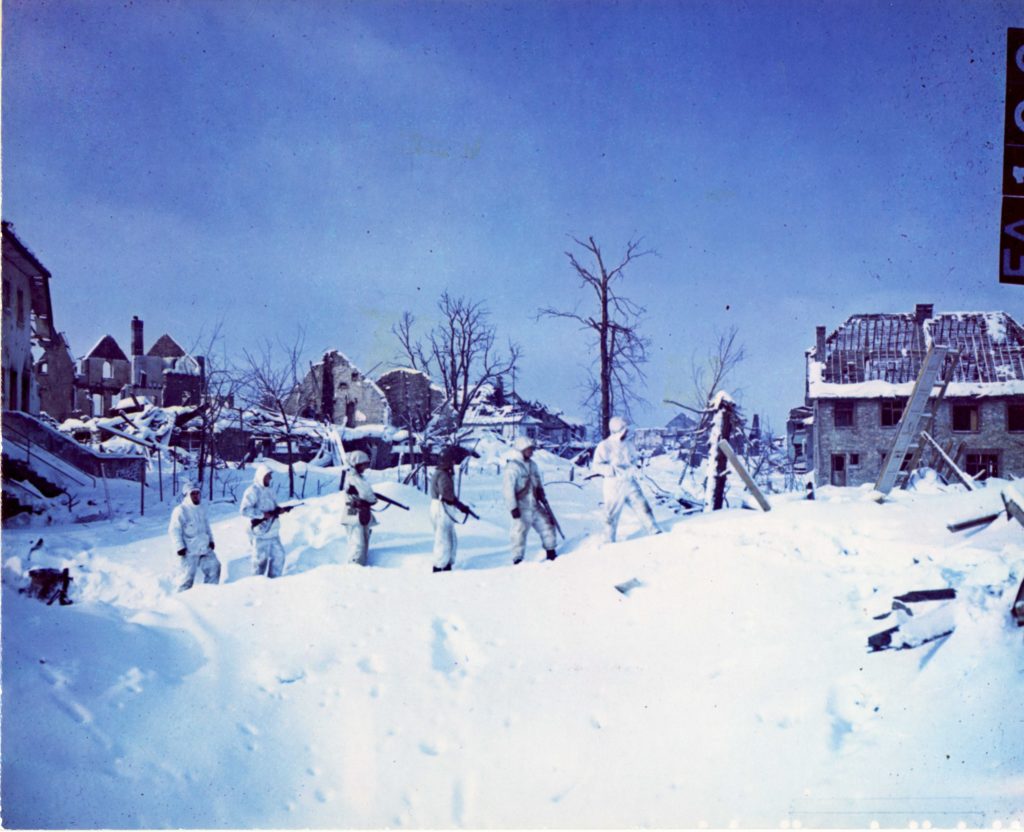
In the centre, Manteuffel’s tank units were similarly slowed by the inability of their engineers and Volksgrenadiers to negotiate a swift passage over the rivers to their front.
Only on the Fifth Army’s very northern flank, where they had high ground, rather than water, to cross, did his men keep up to schedule, eventually surrounding two regiments of the US 106th Division, east of Saint Vith.
To the north, Dietrich was immediately held up by spirited American opposition and poor road conditions – exactly as Manteuffel had predicted – and failed to make any significant progress until 17 December.
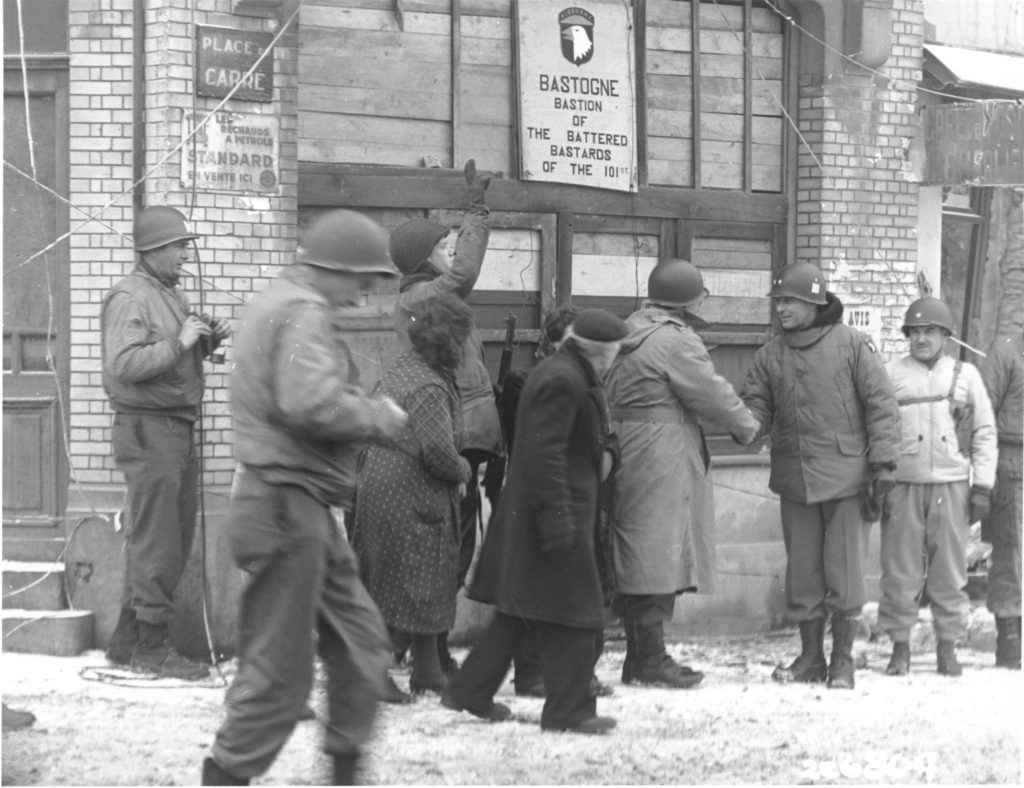
On that day, an armoured column belonging to his First SS Division burst out of the bottleneck, and leaving their infantry behind, thrust deep into American lines.
SS-Colonel Jochen Peiper’s unit would later that day take part in the slaughter of 70 surrendered GIs, in what became known as the Malmedy Massacre.
The trouble was that the landscape of the Ardennes worked against the attackers. Rapid movement was constrained to a few routes that ran east to west through key towns – Bastogne and Saint Vith among them. Control of these roads, and the settlements that sat astride each intersection, would prove vital to the defence of the region.
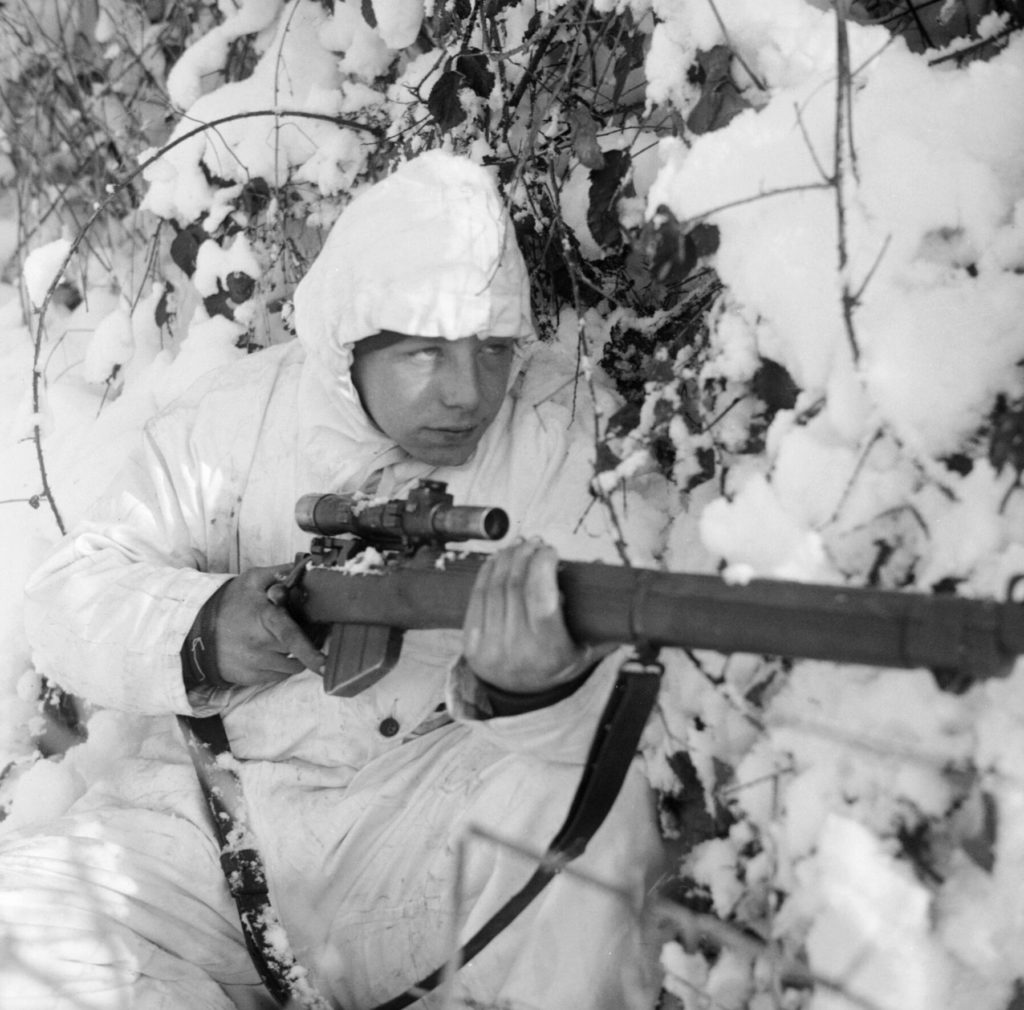
The superior training the GIs received before arriving in Europe meant that the defence of each crossroads was a tactical template that most adopted, independently, throughout the Ardennes – and one that would ultimately stall the German advance.
In May 1940, Belgian and French troops had relinquished control of these route centres early in the battle, surrendering the initiative to their German foes – which explains the contrasting fortunes of defending the Ardennes between 1940 and 1944.
The landscape of forests, hills and deep valleys naturally isolated defender and attacker alike from their parent units. For many Americans, the battle was perceived as a local German attack, made in strength.
One remarked that it was only on 18 December that, “We finally began to realise we were in a situation that was more than a local spoiling attack by the Wehrmacht,” while another commented, “It was 20 December before we found out this was the Battle of the Bulge and we were in it.”
In the south, Brandenberger’s Seventh Army soon ground to a halt and dug in – which was their task. In the north, Peiper equally quickly ran out of routes, when US Army engineers, often from Lieutenant Colonel David E Pergrin’s 291st Combat Engineer Battalion, blew a series of bridges that stalled his advance. Peiper’s armoured column included a battalion of Tiger II (‘King Tiger’) tanks.
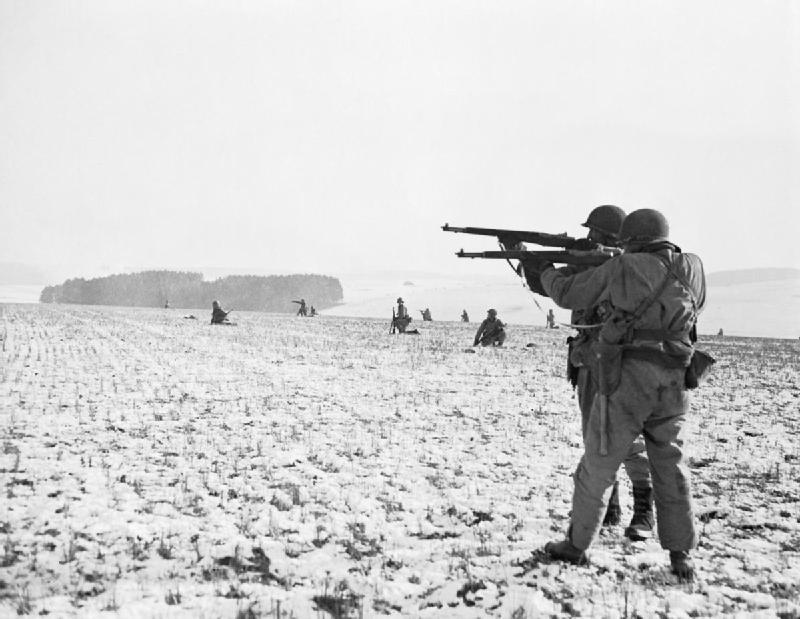
At the time, Nazi cameramen, and model-makers since, have lingered over these panzers, which carried an 88mm gun and armour up to seven inches thick.
No more than 50 were present in the Bulge (the main warhorse being the old Panzer IV) and at 70 tons, Tiger IIs were too heavy for most bridges, consumed nearly three gallons of fuel per mile, and were plagued with mechanical problems; Peiper would lose more to breakdown than enemy action.
Contrary to the many myths that have grown around the Bulge, the SS commander so disliked these heavy tanks that he forced them to travel at the rear of his advance.
This article originally appeared in History of War issue 24. For more in-depth features from expert historians, subscribe to History of War from as little as £16.22
